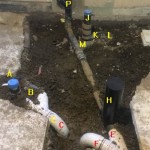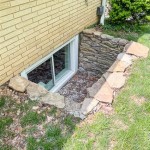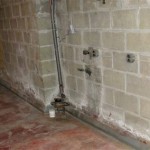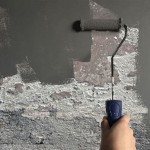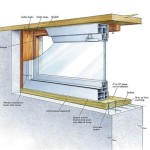Adding a Sump Pump to Your Basement: Essential Considerations
Protecting your home's foundation and valuables from water damage should be a top priority for homeowners. A sump pump can play a crucial role in keeping your basement dry and safe. Here are essential aspects to consider when adding a sump pump to your basement:
1. Location and Placement
The ideal location for a sump pump is in the lowest corner of your basement, where water is most likely to accumulate. Ensure the pump is positioned away from walls or obstructions to prevent interference with its operation.
2. Pump Capacity
Determining the correct pump capacity is essential. The capacity, measured in gallons per hour (GPH), should match the potential water flow in your basement. A higher capacity pump is recommended for areas with heavy rainfall or frequent flooding.
3. Discharge Line
The discharge line carries water away from the sump pump and should be properly installed and sloped downward to prevent water backup. It should discharge at least 10 feet away from the house's foundation, onto a splash block or into a dry well.
4. Power Supply
The sump pump requires a reliable power source. Connect it to a dedicated electrical circuit with a ground fault circuit interrupter (GFCI) for safety. Consider installing a battery backup system to ensure operation during power outages.
5. Alarm System
An alarm system connected to the sump pump can alert you if the pump fails or the water level rises excessively. This is particularly important for unattended basements or areas prone to flooding.
6. Maintenance and Inspection
Regular maintenance is crucial for the longevity and effectiveness of your sump pump. Inspect the pump occasionally for clogs, debris, or wear and tear. Clean or replace the filter regularly and test the pump's operation.
Additional Considerations
- Backwater Valve: Install a backwater valve on the discharge line to prevent sewer backup from entering the basement.
- Sump Pit Cover: A removable cover for the sump pit makes it easy to access the pump for maintenance or repairs.
- Secondary Pump: Consider installing a secondary pump if the area is prone to severe flooding.
Professional Installation
While some homeowners may be able to install a sump pump themselves, it is recommended to hire a licensed plumber or electrician for professional installation. They can ensure the system is properly designed, installed, and tested to meet building codes and safety standards.
Adding a sump pump to your basement is a worthwhile investment in protecting your home from water damage. By considering these essential aspects, you can ensure your sump pump effectively prevents flooding and keeps your basement dry and safe.

Reasons To Install A Sump Pump Bdb Waterproofing

Prevent Basement Flooding The Role Of Sump Pumps In Water Management Dry Foundation Repair

Sump Pump Installation In Pa De Dry Tech Waterproofing Solutions

Basement Sump Pumps Zoeller Pump Company

Adding A Sump Pump To An Existing Basement American Dry Systems

Sump Pump Installation In Kansas City Kc Waterproofing

Adding A Sump Pump To An Existing Basement American Dry Systems

Prevent Basement Flooding By Adding A Sump Pump To Your Holiday Must Haves Allens Plumbing

Sump Pump Installation In New York Installing A System Rochester Ithaca Syracuse Ny

Ultimate Guide To Cellar Sump Pump Installation In The
Related Posts
